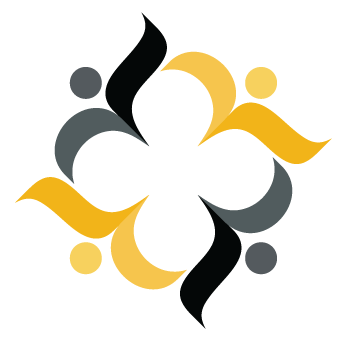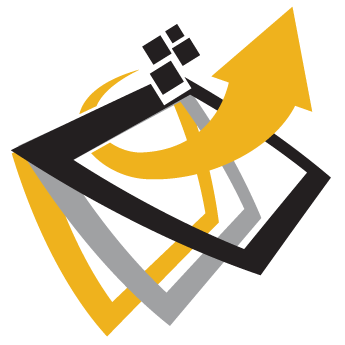| |
CETL | Canvas | AI Guide | Course Design | Online | Software | Workshops

Spring 2022
7th Annual Active Learning Symposium
Co-hosts: CCTS, CETL
This Active Learning Symposium was jointly sponsored by Collaboration and Classroom Technology Services (CCTS) and the Center for Excellence in Teaching and Learning (CETL) in an effort to promote the sharing of innovative teaching practices.

|
|
|
 Daniel J. Robertson Daniel J. Robertson

|
|
Group Exams: How to Effectively Incorporate Active Learning into Assessment
Daniel J. Robertson
Many courses assess student competency through individual examinations, in which the student completes an exam without the help of any external resources. This is in sharp contrast to the “real world” in which most professionals are required to solve problems collaboratively. To bridge this divide and improve student outcomes two-stage examinations are becoming increasingly popular in Academia. In two-stage examinations, students independently complete a test and then immediately complete the same test in small groups of three or four. Student grades are calculated based on a combination of individual and group exam scores. In this interactive workshop, we discuss how to effectively implement two-stage exams and provide evidence supporting their use in courses that implement active learning strategies. Participants will work on developing a two-stage exam for one of their courses during the workshop and are therefore requested to bring an exam with them if possible.
RESOURCE MATERIALS
- Video (32 min)
- Group Exams (pdf)
Framing the Active Learning Classroom
- Two-Stage Exam Learning (pdf)
Collaborative Testing: Evidence of Learning in a Controlled In-Class Study of Undergraduate Students | by Brett Hollis Gilley and Bridgette Clarkston
|
|
|
|
 Juhee Kim Juhee Kim
 Kirsten Pomerantz Kirsten Pomerantz
 Elizabeth Wargo Elizabeth Wargo

|
|
Utilizing Jigsaw for Group Collaboration and Active Learning
Juhee Kim, Kirsten Pomerantz & Elizabeth Wargo
Jigsaw (Aronson et al., 1978) is a strategy that emphasizes cooperative learning by providing students an opportunity to actively help each other build comprehension. Each group member is responsible for becoming an “expert” on one section of the assigned reading material and then “sharing” it to the other members of the team. In this workshop participants will learn about how to use this method in different contexts as we share our examples of using the technique in online graduate and in-person undergraduate courses. In a graduate-level course, we applied the Jigsaw tool to effective group reading, reviewing, reflecting, and responding. It demonstrated that the participation at Jigsaw affected productive zoom meeting results and increased the student's satisfaction with the course. We will present how to design the course and engage students with Jigsaw through this workshop session as well as exhibit how to connect Jigsaw with zoom discussion for students' active learning experience. Utilizing the jigsaw technique in undergraduate teaching methods courses engages students in close reading, peer instruction, and an embodied experience of collaborative learning. We will present a structure for integrating jigsaw in live classes, including planning protocols, initiating and growing the routines, assessing student work (rubric and feedback) and their contributions to the class, and their immediate learning community.
RESOURCE MATERIALS
|
|
|
 Jamaica Ritcher Jamaica Ritcher

|
|
The Write Response: Written Feedback Strategies to Inspire Revision and Transfer
Jamaica Ritcher
Teachers often express feeling uncertain, discouraged, or overwhelmed when it comes to responding to student writing. This ambivalence can be exacerbated by the sense that, despite a teacher's considerable time and best intentions, students do not apply feedback to revision. Drawing on writing center and active learning praxis, this workshop will lead participants through activities that demonstrate how higher-order thinking practices like prioritizing, dialogic questioning, and reflecting motivate students to actively engage in their writing, resulting in more substantive draft revisions and transfer of new skills to future assignments.
RESOURCE MATERIALS
|
|
|
|

Gregory Turner-Rahman

|
|
The Art of Exploration
Gregory Turner-Rahman
I will explain how the use of project work— primarily the production of visual designs and stories—can facilitate a type of abductive reasoning that allows students to more profoundly explore concepts essential to making sense of complex issues. I describe a series of projects for a visual studies course catering to art and design students that is focused on the development of modern clinical practice and contemporary medical patient experiences. The discussions, concept mapping, and project work—including design fiction making—circumscribed key topics and motivated students to reveal thoughtful critiques and personal stories about those topics. Ultimately, they could better understand the breadth and complexity of experiences. RESOURCE MATERIALS
|
|
|
|
 Dan Cordon Dan Cordon
 Sean Quallen Sean Quallen

|
|
Developing a Program-Wide Longitudinal Assessment Rubric
Dan Cordon & Sean Quallen
Over the past several years the ME department has used a longitudinal rubric to assess students' progress from freshman to senior year. Come sit in with Dan Cordon and Sean Quallen to see briefly what went into this rubric and discuss with colleagues how to start creating your own.
RESOURCE MATERIALS
|
|
|
 Hanwen Dong Hanwen Dong
 Terry Soule Terry Soule

|
|
Create Engaging Videos Using eGlass for Flipped Classroom
Hanwen Dong & Terry Soule
Among several departments and colleges at the U of I, the library received a 50-inch eGlass transparent lightboard with the GEER grant in 2021. An eGlass is a transparent glass that allows instructors to write, draw, and annotate. The eGlass is equipped with a built-in camera and can capture the instructor's gaze, facial expressions, and gestures along with the writing and drawings in the same frame. The eGlass is a powerful tool that can be used synchronously via Zoom and asynchronously for flipped classrooms. In this workshop, the presenters will perform a live demonstration of using the eGlass and showcase some eGlass videos created for a computer science class.
RESOURCE MATERIALS
|
|
|
|
 Ashley Kerr Ashley Kerr
 Azusa Tojo Azusa Tojo

|
|
Active Learning with Stories in the Second Language Classroom
Ashley Kerr & Azusa Tojo
In this workshop, we’ll discuss our experiences using stories in the Japanese and Spanish classrooms. Azusa Tojo will present a storytelling activity she uses in JAPN 102: Elementary Japanese II, which starts with students sharing stories with their partners and is followed by listening to their own recording, writing, revising, and re-recording. Ashley Kerr will discuss using creative writing in SPAN 302: Advanced Composition. In this activity, students have “story time” with children’s books in Spanish, examine and practice the use of storytelling devices and their particularities in Spanish, and then write, revise, and share their own short stories. These experiences have shown us that stories in the foreign language classroom serve to 1) engage students, 2) further language-learning and communicative goals, and 3) reduce stress and anxiety levels. This last point is particularly important as fear of “sounding stupid” or “saying something wrong” is often a major obstacle to second language learning. The workshop will conclude with discussion of how these storytelling activities and their benefits could also be applied to the non-second language classroom.
RESOURCE MATERIALS
|
|
|
|
 Ann Abbott Ann Abbott

|
|
Active Learning for Life
Ann Abbott
I teach courses in mathematics and statistics, often general education courses. Most students take the course to satisfy requirements. I have developed some strategies that have been successful in engaging students in the course material by making it "real" for them. I begin with real scenarios with intentional complexity beyond the scope of the course and ask students to provide their own examples of similar scenarios. Using student examples (different examples each class meeting), we decompose the complexity in the context of the course content. Using scenarios suggested by students helps them understand the topic and brings in rich discussions where students are able to learn with others and from others. Diversity is naturally included in the consideration of a variety of student examples. When students are able to "see" the course material within something they are already interested in, they develop a way of thinking that transcends the course itself in their approach to problem solving. |
|
|
|
 Heather Ebba Maib Heather Ebba Maib
 Laura Holyoke Laura Holyoke

|
|
Trauma-Informed Teaching: Creating Communities of Care
Heather Ebba Maib & Laura Holyoke
Over the last twenty years, there is an increasing body of research bringing attention to the impact early childhood trauma and adversity have on the ways people approach daily challenges and interpersonal relationships. While trauma-informed practices have been successfully implemented in the K-12 setting, we argue that institutions of higher education are well-positioned to address needs of adults who have experienced adversity as well as anxiety and toxic stress, much in the same way the K-12 system supports children. Even though trauma-informed practice was designed for children, we believe it is necessary for adults who bring maladaptive coping mechanisms into higher education organizations. This growing need is particularly timely as we navigate our future workplaces and learning communities. A trauma-informed approach shifts questioning from “What’s wrong with you?” to “What happened to you?” Such an approach removes blame from the person to the situation and helps those who have experienced trauma become open to their own self-awareness. In this session, we will explore ways to adopt a trauma-informed approach to our work and relational spaces in support of building communities of care.
RESOURCE MATERIALS
|
|
|
|

Jaap Vos

|
|
Creating an interactive online and virtual learning environment with e-Glass and Zoom: quick, fun, effective and students don't mind when you mess up.
Jaap Vos
In this session, I will show participants how I use eGlass and Zoom to quickly create interactive content for both my online and virtual classes. I will share both my personal experiences as an instructor and the feedback from students. After that I will show how participants can use these two methods in their own classes, depending on their specific needs and their comfort level with technology. First, I will show how you can make virtual presentations much more active by simply using the "PowerPoint as a background" feature in Zoom with a $25 green screen. Next, I will show how you can use eGlass either as a virtual writing board or as a way to interact with your PowerPoint slides. RESOURCE MATERIALS
|
|
|
|
 Dan Ewart Dan Ewart

|
|
How Leadership Can Help with Active Learning: Priorities and Funding
Dan Ewart
The VP for IT and CIO, Dan Ewart, will share his views on institutional support for active learning then ask the audience, through discussion and polls, how the university should prioritize efforts in this area. Time for questions and answers will be provided. |
|
|
 Stephen Miller Stephen Miller

|
|
Active Learning, the Socratic Method, and the Evolution of the Law School Classroom
Stephen Miller
Since the late 19th century, the legal classroom has been dominated by the Socratic Method. That is changing; indeed, the law school classroom may have changed more in the last decade than it did in the preceding century. In this session, I will discuss several active learning approaches I utilize alongside the Socratic Method to supplement and expand traditional methods of legal analysis and training. These methods include a variety of formative assessments, document drafting, and role playing that give students early indicators of their subject matter knowledge and ways to tier growth for those struggling with basic material. Participants will learn how to create manageable formative assessments and provide feedback that is not overly burdensome.
RESOURCE MATERIALS
|
|
|
|
 Robert Perret Robert Perret

|
|
Hands-On History: Active Learning in the Archives
Robert Perret
The University of Idaho houses and preserves 36,000 square feet of unique historical artifacts in our Special Collections and Archives. History impacts and connects most academic disciplines. More important, local history allows students to see themselves as important to Idaho's past and future. This workshop will explore possibilities for incorporating archival materials into your coursework. You'll gain awareness of the materials available through Special Collections and the instructional support our department can provide. You'll also walk away with ideas for getting your students hands-on with history.
RESOURCE MATERIALS
|
|
|
 Lauren McCleary Lauren McCleary

|
|
Centering the Student in a General Education Introduction to Art Course
Lauren McCleary
During this workshop, I will share some of the ways I have been working to evolve ART 100 into an accessible, sustainable, and student-centered course using the Virtual Meeting Platform, Flipgrid, Open Education Resources, and Choice-Based assignments. I will also engage participants in Visual Thinking Strategies (VTS) exercises to demonstrate the value of close looking for deeper understanding. Attendees will gain insight into resources and strategies to center the student in a large "lecture" course.
RESOURCE MATERIALS
|
|
|
Archive of Past Active Learning Symposiums
|
|